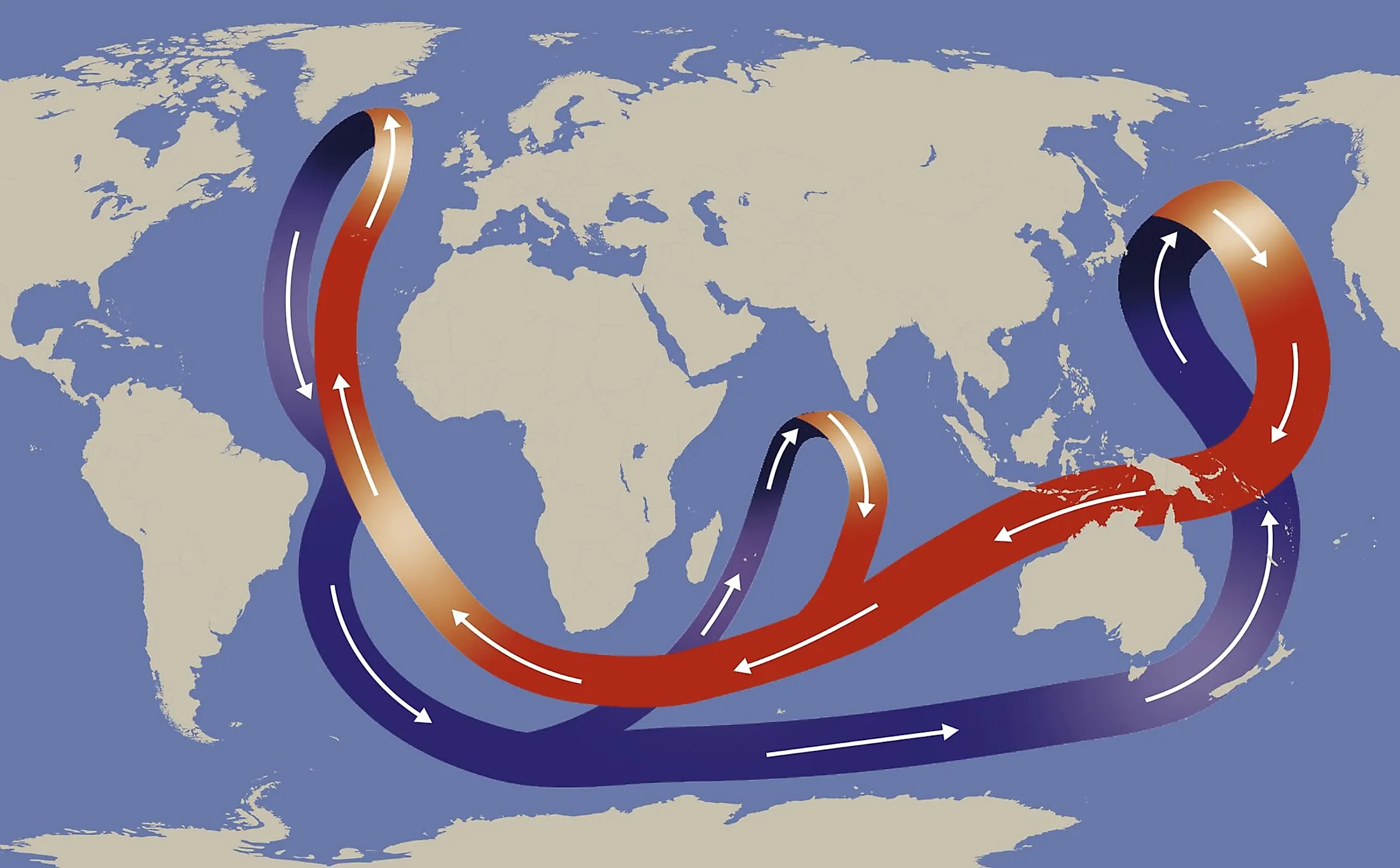
What is The Ocean Conveyor Belt?
When viewed from Space, the most distinctive feature of Planet Earth is its expansive oceans. Oceans cover approximately 70.8% of the planet’s surface and have a total volume of about 321,000,000 cubic miles. Being the principal component of the Earth’s hydrosphere, oceans are integral to life on the Blue Planet. However, oceans are not still water bodies, and the water continuously circulates in the oceans, creating ocean currents. The circulation pattern of ocean currents is mainly determined by many factors, including prevailing winds, variations in sea temperature, Rotation of the Earth and Coriolis effect, figuration of the coastlines, and differences in salinity.
There are two basic types of ocean currents: surface oceanic currents (driven by global wind systems) and deep ocean currents (mainly caused by density and temperature gradients). The Thermohaline Circulation, often called the Global Ocean Conveyor Belt, distributes enormous quantities of heat and moisture around our planet, plays a crucial role in cycling vital nutrients and gases and determines the climate of different regions on Earth.
What Is Thermohaline Circulation?
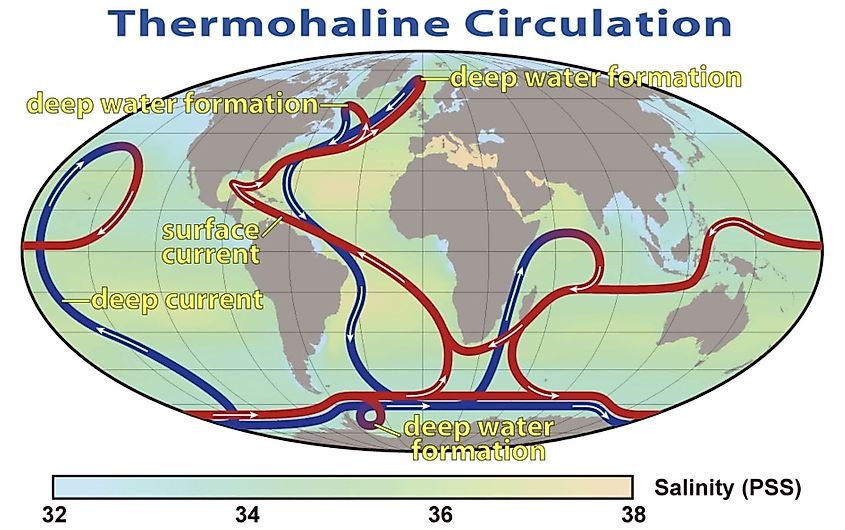
The differences in the density of ocean water created by surface heat and freshwater fluxes contribute to a global-scale circulation system referred to as the Thermohaline Circulation or the Global Ocean Conveyor Belt. The term ‘thermo’ refers to ‘temperature,’ while the word ‘haline’ refers to salinity, the two most significant factors determining ocean water density. The Global Ocean Conveyor Belt concept was developed and popularized by the renowned American geochemist Wallace Smith Broecker. Occasionally, it refers to the “meridional overturning circulation (MOC),” which is believed to be a more accurate and well-defined measure.
An essential part of this global thermohaline circulation is the Atlantic meridional overturning circulation (AMOC). This extensive system of ocean currents distributes heat and nutrients throughout the world’s ocean basins. The AMOC also plays a vital role in absorbing and storing atmospheric carbon and regulating weather patterns worldwide.
Overview Of The Global Ocean Conveyor Belt
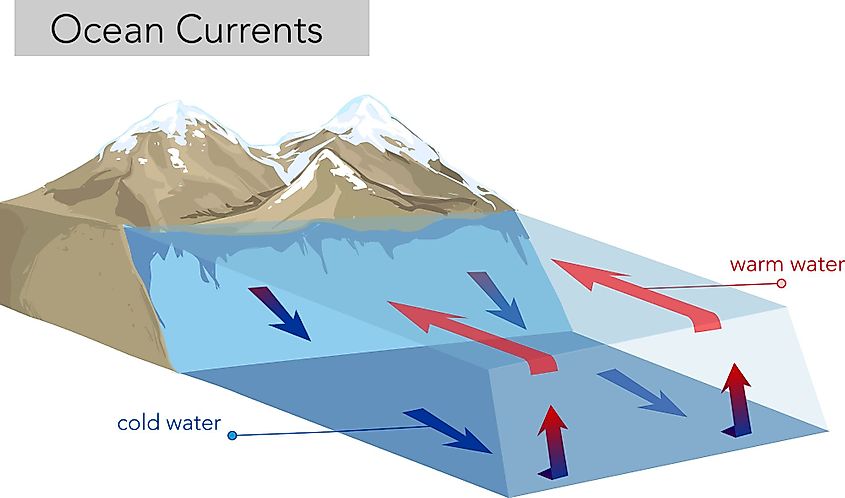
It is known that surface currents are primarily propelled by winds, while the differences in water densities caused by variations in temperature and salinity drive the deep-water currents. Different studies have revealed that the density of ocean water is not uniform worldwide and varies quite remarkably. Warm seawater is comparatively less dense than colder seawater, whereas due to the dissolved salt content, salt water is much denser than freshwater. In other words, the cold and saltier the water is, the denser it becomes, and as the water becomes denser, it sinks to the bottom. A model described by well-known oceanographers Henry Stommel and Arnold B. Arons in 1960 revealed that the formation of deep-water masses due to temperature and salinity variations in the North Atlantic and Southern Oceans are the primary driving forces of the thermohaline circulation or the Global Ocean Conveyor Belt.
Formation Of Deep-Water Masses
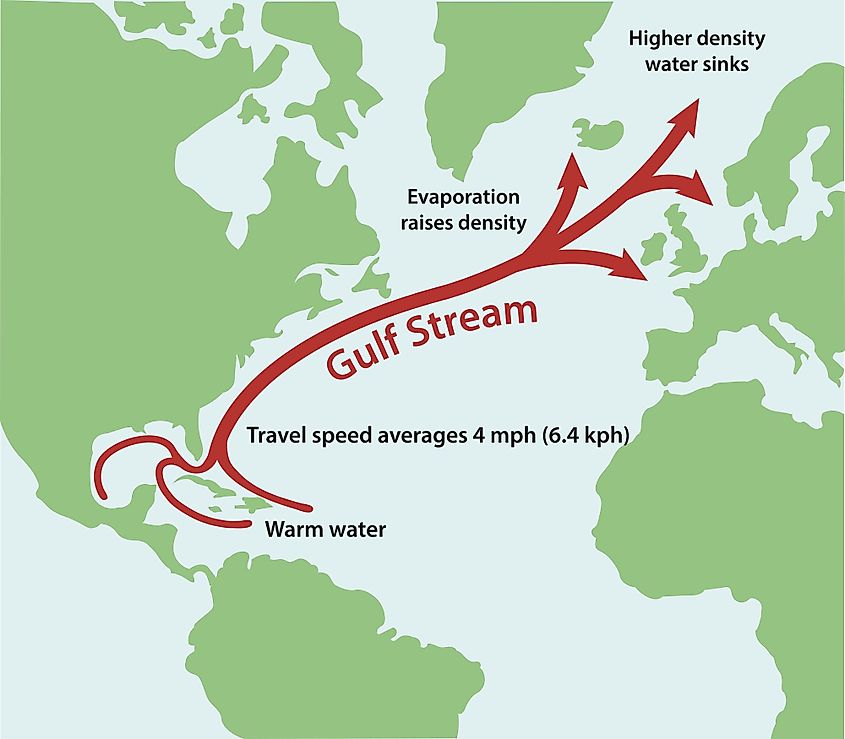
The Gulf Stream and North Atlantic Current transfer massive volumes of warm tropical water up into the Labrador and Greenland Seas, where the cold Arctic winds chill the surface waters. This chilling of surface water, evaporation, and sea-ice formation lead to the creation of the cool and denser North Atlantic Deep Water. As warmer water is transferred northwards, the cooler and denser water sinks to make space for the incoming warm waters. The North Atlantic Deep Water sinks and flows southwards along the North and South American continental slope towards Antarctica. Here the water mass flows eastwards around the continent and mixes with the Antarctic waters. The resulting Antarctic Circumpolar water flows northwards into the Pacific and Indian Oceans. As this dense colder water travels through the oceans, it gradually mixes with the warmer waters. This warm water then rises to the surface, creating an ‘upwelling’ that brings the nutrients to the surface.
In the Pacific, the surface water flows through several passages between the Indonesian Islands and reaches the Indian Ocean. These waters then flow via the Indian Ocean Boundary Current around southern Africa. After entering the Atlantic Ocean, the surface waters join the wind-driven Atlantic currents and become saltier by evaporation. Some of this water vapor is moved out of the Atlantic Ocean basin by the Trade winds across the Isthmus of Panama and deposited into the Pacific Ocean basin via rainfall. The Atlantic surface waters then flow northwards to the Labrador and Greenland seas completing the Global Ocean Conveyor Belt.
Effects Of The Global Ocean Conveyor Belt On Global Climate
The Global Ocean Conveyor Belt plays a significant role in distributing the heat of the Sun around the globe after the ocean has absorbed it. It also plays a crucial role in supplying heat to the polar areas, therefore, regulating the amount of sea ice formation in these regions. In fact, without this thermohaline circulation, the Equatorial regions would have been extremely warmer, the polar regions much colder, and the western portion of Europe would not have enjoyed the moderate climate that it currently experiences. Moreover, changes in the thermohaline circulation significantly impact the Earth's radiation budget.
Effect of Climate Change On Global Ocean Conveyor Belt
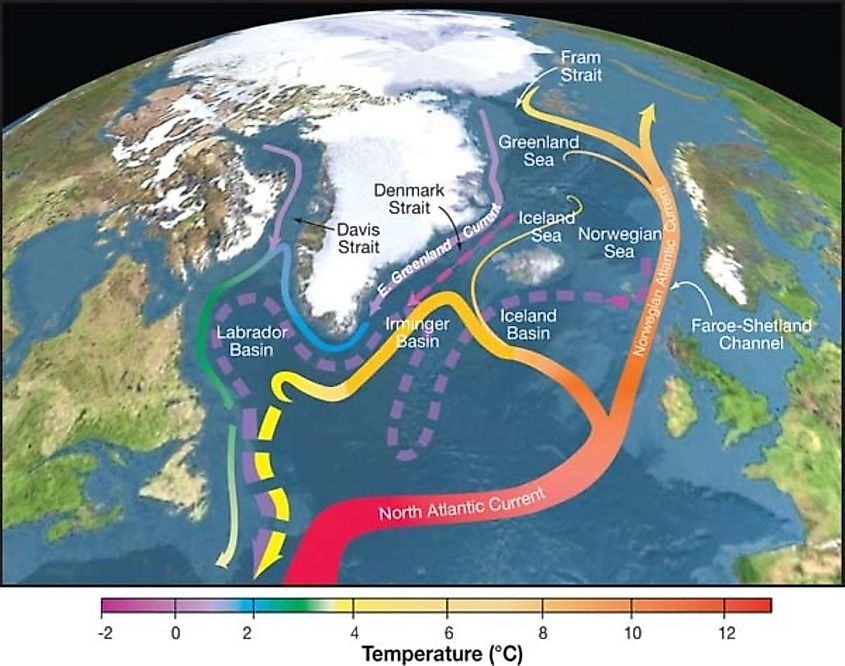
Scientists believe that anthropogenic climate change can drastically affect the smooth functioning of the Global Ocean Conveyor Belt. By increasing the ocean heat content and freshwater flow from the melting ice sheets, climate change can potentially weaken the Atlantic Meridional Overturning Circulation (AMOC). Recent Intergovernmental Panel on Climate Change (IPCC) reports have revealed that the AMOC would further weaken and likely decline over the 21st century. The weakening of AMOC will affect average temperatures in Scandinavia and Britain, accelerate the rise in sea levels along the North American coast, and lower the primary production in the North Atlantic Ocean. An AMOC shutdown can have much more severe consequences on terrestrial and marine ecosystems as well as trigger other climate tipping points.
As evident from the above discussion, the thermohaline circulation or the global conveyor belt is a crucial component of the Earth’s climate system. Thus any changes in this circulation can have far-reaching consequences. Therefore, close monitoring and identifying the changes in ocean circulation is the need of the hour. These observations will help scientists predict how the oceans will respond as the Earth gets warmer due to climate change.











